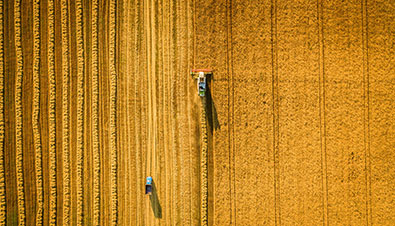Read the latest information on
Foot-and-mouth disease
 Australian grain has a healthy export market, accounting for 16 per cent of the country’s agricultural export income. Grain quality and stringent measures across the value chain to ensure it is safe to consume help facilitate access to key export markets.
Australian grain has a healthy export market, accounting for 16 per cent of the country’s agricultural export income. Grain quality and stringent measures across the value chain to ensure it is safe to consume help facilitate access to key export markets.
The Australian Government’s National Residue Survey (NRS) is one of the systems employed to manage the risk of chemical residue and environmental contaminants in food products. The NRS tests for residues of pesticides and environmental contaminants in 21 grains, pulses and oilseeds.
In the event of harmful residues being detected, the Australian grains industry could jeopardise the health of people, animals and the environment, and risk access to export markets.
The Australian Pesticides and Veterinary Medicines Authority (APVMA) sets maximum residue limits (MRLs) for agricultural and veterinary chemicals in agricultural produce, particularly produce entering the food chain.
Regular testing of grains through the NRS also demonstrates a high level of compliance of the MRLs. In many cases this is well above 99.5 per cent.
Any detection above an importing country’s MRL limits can have significant consequences for the grain industry, which can include:
What are harmful residues?
A residue is what remains of a chemical or heavy metal (for example, lead, arsenic or cadmium) inside a plant at a point in time. The residue could be the original substance or a derivative (metabolite) of the original substance. All chemicals and heavy metals cause residue, but the time taken for a residue to break down varies depending on the substance and the type of crop.
It may be harmful when the amount of residue in a crop exceeds the MRL for the chemical. The MRL is a legal limit and not a health level and is the maximum amount of a chemical residue allowed in a food or animal feed. A residue above the MRL usually indicates a misuse of the chemical and penalties could apply if produce is sold with a chemical residue exceeding the MRL.
How do harmful residues occur?
Residues above the MRL might occur when:
What can growers do to avoid harmful residues in crops?
Keep crops free of harmful residues by:
Farm hygiene and record keeping is important
Storage sites and handling equipment should be cleaned down thoroughly after using chemicals or fertilisers. This includes silos, augers, trucks and field bins that have been used to move or store fertiliser or treated grain (for example, pickled grain). One way to avoid contamination is to consider having dedicated equipment for fertilisers and treated seed on your farm.
The best way to clean most grain transport or storage equipment is by using compressed air, followed by water. Using a broom alone is unlikely to adequately remove dust and chemicals. Alternatively, compressed air alone can do a good job.
It is also important to ensure contractors who transport grain comply with the grain Carrier Code of Practice. Request a declaration of cleanliness, which requires the carrier to retain records of cleaning and prior loads that helps to determine the risk of chemical contamination.
Accurate record-keeping is always important and is particularly useful if grain is subject to a trace-back. Keep accurate records of all chemical and fertiliser applications to crops and pastures, chemical storage requirements, cleaning activities (for example, equipment, silos and harvest bins) and truck and trailer registrations of contractors delivering grain to market.
A single load of non-compliant grain can have a significant impact on export markets. Protecting Australia’s grain industry and maintaining a reputation as a reliable supplier of high-quality, safe grain requires the whole grain supply chain to be diligent about the use of chemicals.
For more information on pesticide residues or the NRS, access the GRDC Grain Market Access and Chemical Residues fact sheet, visit the Department of Agriculture, Water and the Environment’s website, or contact one of the Grains Biosecurity Officers in your region.
Acknowledgement: This article was originally published by the Grains Farm Biosecurity program.